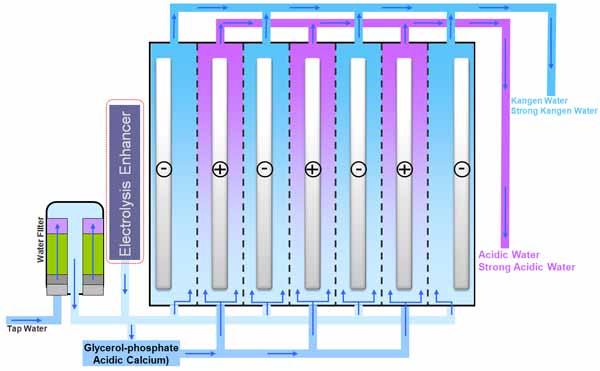How Ionized Hydrogen Water is Produced
Ionized hydrogen water is produced through a process called electrolysis – where electric current is passed through the water to separate water into oxygen and hydrogen gas (or positive and negative ions).
The electrolysis takes place in the electrolysis chamber containing oppositely charged electrode plates. The result is a collection of positive H+ ions and negative OH- ions ready to neutralize free radicals in your body.
What the ionization process does:
- Replaces soluble acids in your drinking water with trace minerals, calcium, potassium, magnesium, and sodium. Turns your drinking water into great tasting hydrogen water.
- Reduces the electron millivolt (mV) charge of your water which creates -ORP or negative oxidation-reduction potential. This turns your water into the highest antioxidant liquid on the planet.
- Ionization breaks the water molecules apart so hydrogen comes out from the primary tube, and oxygen comes out of the secondary tube. For a more thorough explanation, go here.
- Aids in the displacement of toxins through urination, sweat, and other normal channels of elimination through your kidneys, bowel, lymph and skin.
- Works to make your cells stronger so sickness and diseases can be fought more effectively and efficiently by your immune system.
See diagram below:
The health benefits of ionized alkaline water are discussed in the following article Hydrogen Water Health Benefits.
Read more on:

